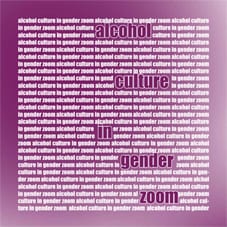I have grown up in a country where the International Day of Women (IDW) was a day like all the others with the exception that women got flowers from men. It was the day when women were shown respect and appreciation but I did not really understand why. After some time I realized that in some countries there is lots of attention paid to this day and it’s put into a broader context while in other countries the IDW just passes by being it a small “pre-Valentine’s” day.
The International Day of Women dates back to the year 1909 in the USA and has its roots in the Socialist Party. The following years – through various developments of marking women’s important role in society and demanding voting rights in various countries – led to an annual celebration of women. The day gained importance in Eastern countries – Russia and later China announced it as an official holiday and it reached western countries after the UN General Assembly proclaimed 8th of March as UN day for Women’s rights and International peace in 1977.
The celebrations of this day vary in their content depending on which part of the world we look at. 8th of March can be the day of expression of love and respect, or of highlighting the womens’ significant contributions and achievements in society or it can be the day of pointing at the women’s fight through everyday life and the need for equality and equal opportunities in all areas. I would like to make this day a reminder that many women – regardless the part of the world – do struggle with unequal opportunities to education and work, live in poverty and are exposed to domestic violence.
Consumption of alcohol shows to be the common factor for all the mentioned problem areas. Alcohol is the main trigger of domestic violence. Alcohol use is hard on the family budget, which consequently causes cuts on education being either the leading way to poverty or an obstacle on the way out of it.
Despite the fact that women consume less alcohol than men, women carry most of the consequences and gender based social norms just nurse the current situation.
We can notice gender differences in patterns of alcohol use throughout all the cultures. The differences vary from country to country but the main principles prevail. Men use alcohol in bigger amounts and more often. Women tolerate lower amounts of alcohol and are more likely to suffer from alcohol’s effects. Men use alcohol in different contexts than women. The physiology of the male and female body is just a minor reason for these differences. Largely, the differences are caused by the social norms and expectations constructed and communicated in our cultures.
It is a part of many cultures that men are expected and encouraged to use alcohol to prove their manhood. It is not unusual that otherwise socially unacceptable behavior and even criminal acts by men are excused if they were done under the influence of alcohol. Women’s inferior position on the other hand is reflected in the expectation to accept men’s violence and in lack of support in the case women themselves face problems with alcohol use.
The unequal treatment has to do with implying alcohol use as a means of underpinning power relations, established between men and women. Gender related norms are rooted very deep in societies; they are not up to date and often unreflected. That makes them easy to use in seemingly modern concepts. The alcohol industry has taken a grip of the concept of equal opportunities and works actively to create an illusion that women’s role and position in society will equal men’s by making women use more alcohol to match men’s consumption in belief that it will also bring them men’s status. Sadly it only brings negative consequences on women’s health, women’s ability to improve their social standings and the overall society – and it reinforces the original male norm. It’s of immense importance to start questioning the gender norms and roles if we want the work for equality to create the desired effect.
This year’s specific theme of IWD is: “Empower Women – End Hunger and Poverty”. IOGT International’s answer is freedom, independence, education, empowerment and policy. Freedom from alcohol and other drugs and their harms for individuals, families, communities, the economy and society at large and women’s independence from spouses who are drug users; education to enable women to freely navigate through life and empowerment to support women to live up to their full potential as individual human being and citizen of a community; policies that are evidence based and will help ensure all of the above:
– make alcohol less available and harder to access which will decrease domestic violence and the economic burden on families
– ban alcohol marketing that promotes distorted values and pictures of women
– support drug free environments which will empower freedom and creativity in women and girls.
As I said the International Day of Women used to be for me a day of a nice act with no real content. Let’s make this day to be a wake up call for questioning the gender based roles and norms and yet another step to freedom for the whole population by setting life free.
—
For more thought and action material:
Bunker Roy from the Barefoot Movement – helps rural communities to become self-sufficient- a remarkable piece: “One lesson we learned in India was: men are untrainable. So we came up with a great solution: train grand mothers.”
I think the IWD is about more than giving congrats and flowers. It’s about recognizing the female part of each of us equally and every day. A fantastic TED Talk by Eve Ensler.
WHO Fact Sheet: Intimate partner violence and alcohol
Response to Tackling poverty, inequality and deprivation in Scotland
IOGT International booklet: Alcohol culture in gender zoom
